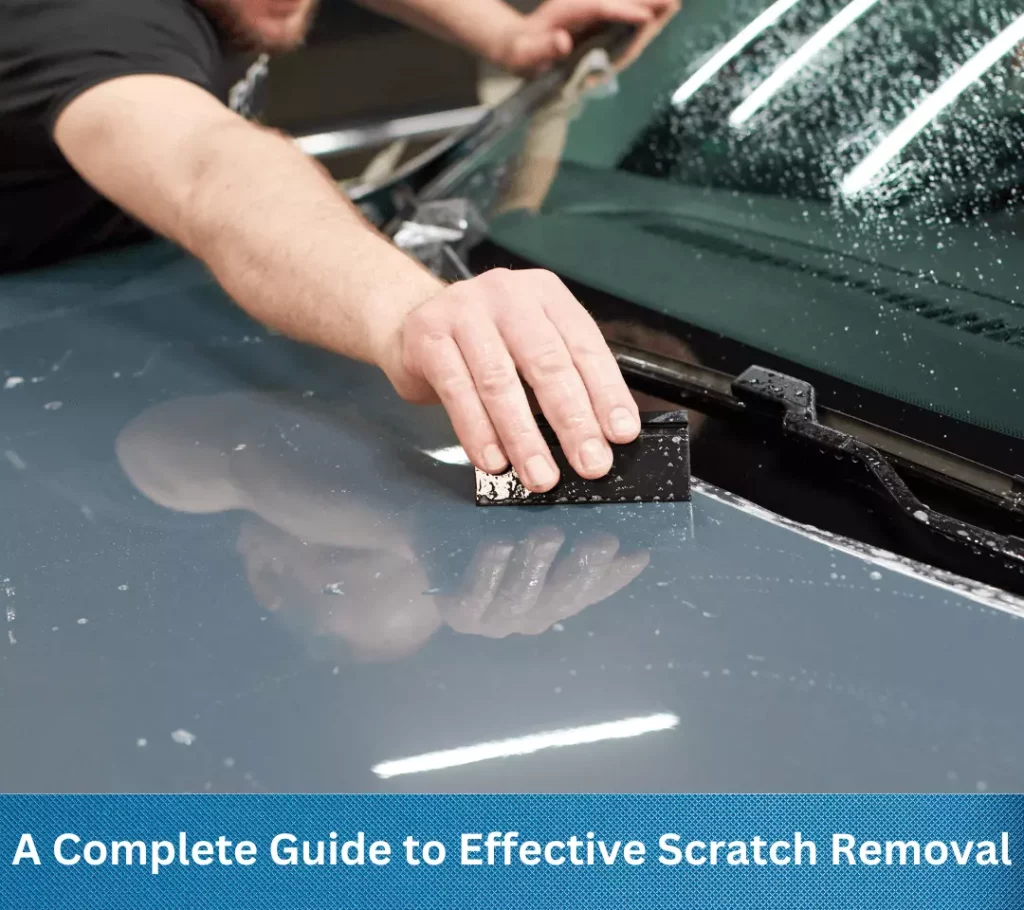Introduction
Have you ever noticed unsightly scratches on your beloved car’s exterior? Car scratches can be frustrating and diminish the overall appearance of your vehicle. However, with the right knowledge and tools, you can effectively remove these scratches and restore your car’s glossy finish. In this article, we will explore the importance of body compound for car scratches and guide you through the process of scratch removal, providing you with the information you need to make your car look as good as new.

Understanding Car Scratches
Car scratches are inevitable and can occur due to various reasons, such as accidental brushes with other objects, car park mishaps, or even natural elements like branches or stones. Scratches can range from minor surface marks to deep cuts, and their severity determines the complexity of the removal process.
The Role of Body Compound
Body compound, also known as rubbing compound or scratch remover, is an essential product for effectively eliminating car scratches. It contains abrasive particles that help smooth out the scratched surface, reducing the visibility of the damage. Body compound works by leveling the surrounding area, making it blend seamlessly with the rest of the car’s paint.
Types of Body Compounds
There are different types of body compounds available in the market, each tailored for specific scratch removal purposes. Here are some common types:
1. Heavy-Cut Compound
Heavy-cut compounds are designed to tackle deep scratches and paint imperfections. They contain aggressive abrasive particles that remove a significant amount of material from the surface. These compounds are best suited for severe scratches that cannot be addressed with lighter products.
2. Medium-Cut Compound
Medium-cut compounds strike a balance between heavy-cut and light-cut compounds. They are effective in eliminating moderate scratches and imperfections without causing excessive damage to the surrounding paint. Medium-cut compounds are commonly used for general scratch removal.
3. Light-Cut Compound
Light-cut compounds are gentle products suitable for minor surface scratches and swirl marks. They contain fine abrasive particles that delicately smooth out the damaged area, providing a seamless finish. Light-cut compounds are ideal for maintaining the overall appearance of your car.
Choosing the Right Body Compound
Selecting the appropriate body compound for your car’s scratches is crucial for achieving optimal results. Consider the following factors when choosing a body compound:
- Severity of the scratches
- Type of paint on your car
- Compatibility with your car’s clear coat
- User-friendliness and ease of application
Preparing Your Car for Scratch Removal
Before using body compound, it is important to prepare your car properly. Here are the steps to follow:
- Thoroughly wash and dry your car to remove any dirt or debris that may further scratch the surface.
- Inspect the scratches carefully to determine their severity and location.
- Tape off any surrounding areas that you want to protect from the compound.
- Use a fine-grit sandpaper or a scratch removal kit (if necessary) to smoothen any raised edges around the scratches.
Step-by-Step Guide to Using Body Compound
Now that your car is prepped, let’s dive into the step-by-step process of using body compound:
- Apply a small amount of body compound to a foam or microfiber applicator pad.
- Work the compound onto the scratched area using gentle circular motions. Apply moderate pressure to ensure the compound effectively blends with the surrounding paint.
- Continue buffing the scratched area until the compound starts to break down and diminishes in visibility.
- Wipe off any residue with a clean microfiber cloth.
- Inspect the results and repeat the process if necessary.
Buffing and Polishing Techniques
After using body compound, buffing and polishing are essential for achieving a flawless finish. Here are some techniques to consider:
- Use a dual-action polisher or a microfiber cloth to buff the treated area gently.
- Apply a suitable polishing compound to further enhance the shine and remove any swirl marks.
- Finish off by hand-polishing with a high-quality car wax or sealant for added protection and long-lasting shine.
Additional Tips for Effective Scratch Removal
- Always follow the manufacturer’s instructions when using body compound and other products.
- Test the body compound on a small inconspicuous area before applying it to the entire scratched surface.
- Work in a shaded area to prevent the compound from drying too quickly.
- Be patient and take your time during the process to achieve the best results.
- Regularly maintain your car’s paint by washing and waxing it to minimize the occurrence of scratches.
Preventing Future Scratches
While it is impossible to completely avoid scratches, you can take preventive measures to minimize their occurrence:
- Park your car in designated areas away from high-traffic zones.
- Use car covers or protective films to shield your vehicle from potential scratches.
- Avoid washing your car with abrasive materials or harsh chemicals that may damage the paint.
- Consider installing paint protection film or ceramic coatings to provide an additional layer of defense against scratches.
The Benefits of Professional Scratch Removal
If you’re hesitant to tackle scratch removal yourself, you can opt for professional services. Here are some benefits of professional scratch removal:
- Expertise: Professionals have the knowledge and experience to handle various types of scratches.
- Advanced Tools and Techniques: Professionals use specialized tools and techniques for superior results.
- Time-Saving: Professional scratch removal services can save you time and effort.
Conclusion
Car scratches can be frustrating, but with the right approach and the use of body compound, you can restore your car’s appearance and protect its value. Remember to choose the appropriate body compound, follow the step-by-step process, and take preventive measures to minimize future scratches. By investing time and effort into scratch removal, you can enjoy a beautifully maintained car that turns heads wherever you go.
FAQs
1. Can body compound remove deep scratches? Body compound can significantly reduce the visibility of deep scratches, but it may not completely eliminate them. In such cases, professional assistance may be required.
2. Is body compound suitable for all types of car paint? Body compounds are generally safe for most types of car paint, but it’s important to check the manufacturer’s recommendations and conduct a patch test before applying it to the entire surface.
3. How often should I wax my car to prevent scratches? It is recommended to wax your car every three to four months to maintain a protective layer on the paint and minimize the risk of scratches.
4. Can I use body compound on a matte finish car? No, body compound should not be used on matte finish cars, as it can alter the texture and appearance of the surface. Consult a professional for specialized scratch removal techniques for matte finishes.
5. Can I remove scratches with toothpaste? Toothpaste is often suggested as a DIY scratch removal remedy; however, it may only work for very minor scratches and not for deeper ones. It’s best to use dedicated car scratch removal products for effective results.



